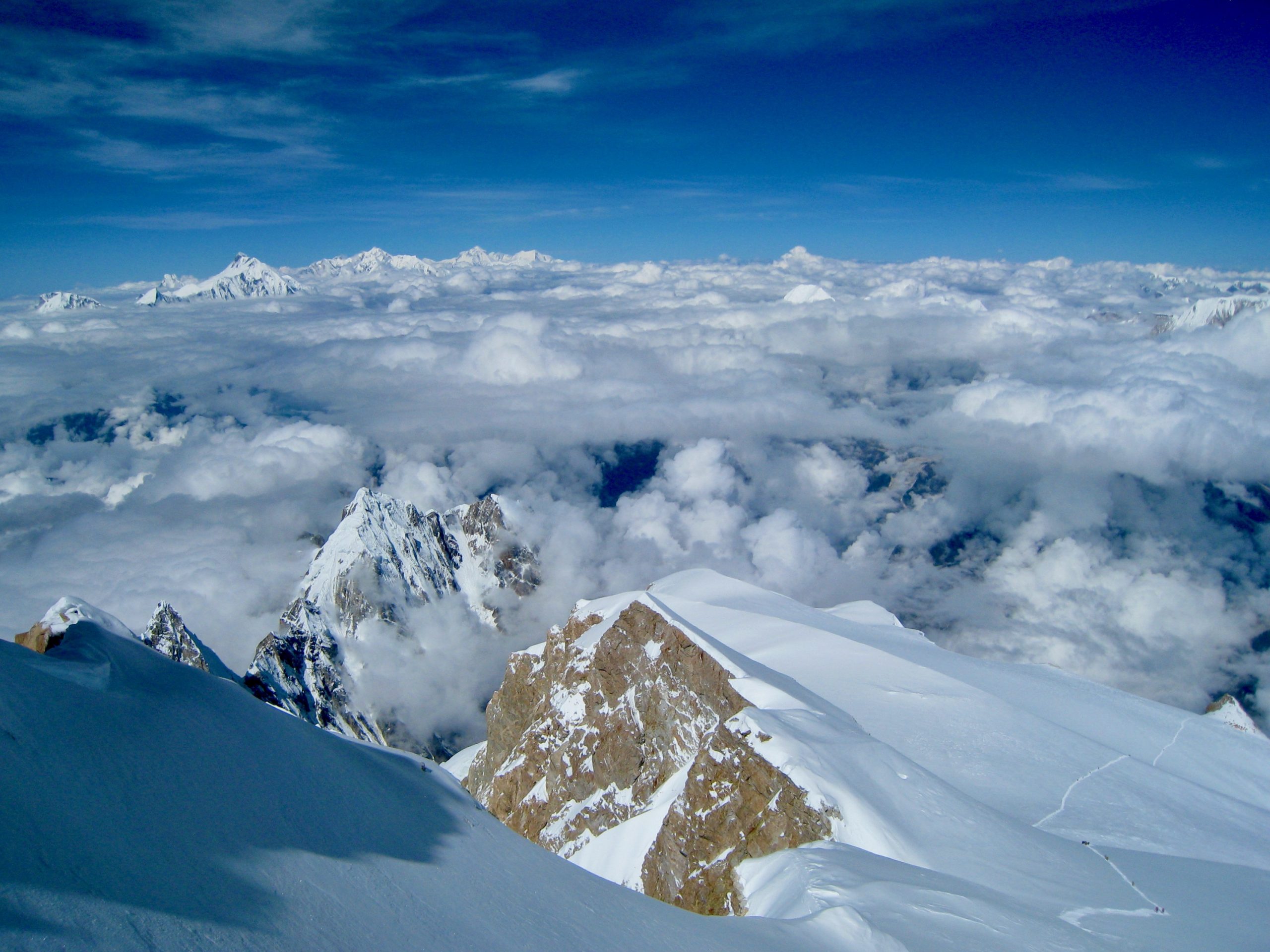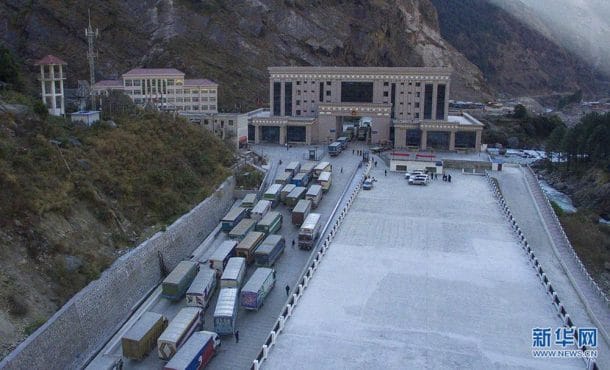An open letter to Mountaineering Policy Decision Makers,
With the explosion of people climbing mountains, urgent issues have moved to critical. It’s time to take action.
Please let me briefly introduce myself. I’m Alan Arnette living in the US. I’ve been on 38 significant expeditions since 1987 in Africa, Argentina, Australia, Antarctica, Bolivia, Chili, China, Ecuador, France, Nepal, New Guinea, Pakistan, Peru, Russia, Scotland, Switzerland, the United States, and the United Kingdom.
I use local and foreign operators on my expeditions, including Everest and K2. In addition, I’ve organized climbs on 8000-meter peaks. I’ve covered mountaineering on my blog, www.alanarnette.com, and for several outdoor media outlets for 25 years. In fact, Outside Magazine cited me as “one of the world’s most respected chroniclers of Everest.” Today, I have around 3 million worldwide followers.
Without exception, my experiences have been positive and life-changing. However, today, I’m very concerned about the environmental impact on the mountains and the safety of clients and staff. In summary, too many climbers lack sufficient experience and risk climbing with operators who lack appropriate training.
You have the capacity and authority to enact meaningful changes that would materially impact these areas; hence I respectfully submit these suggestions for your consideration.
Leave No Trace (LNT)
Teams leaving trash on mountains is not new but has reached an unacceptable level due to a massive number of climbers each season. While many countries have policies to remove rubbish and non-refundable deposits for offenders, the problem is getting worse, not better.
I applaud the multiple clean-up efforts by private and government groups; however, the goal should be to have no trash to clean up on any mountain.
There are three solutions to this problem: 1) education of the clients and support staff. 2) Strict on-mountain monitoring at all camps throughout the season, and 3) Verification of Leave No Trace principles before a team leaves base camp.
These are proven policies on Antarctica’s Vinson Massif, Argentina’s Aconcagua, and Alaska’s Denali.
Reduce Route Overuse
Many of the routes on the most famous mountains have been used for decades and are now showing damage.
These routes need to be retired to allow restoration. The development of new ones would adjust for changes due to climate change and provide opportunities for guides and clients to explore new areas while letting the older ones recover.
Where there are no viable alternatives, reduce the number of permits issued using a lottery system. For example, Alaska uses this approach to manage the number of visitors to watch bears during the annual salmon run, as does California for its popular peaks.
Client Experience
The mountaineering industry has attracted new customers through lower prices and higher support levels. Unfortunately, an unintended consequence is the peaks have more inexperienced climbers than ever. They often are not self-sufficient or even have basic climbing skills and thus rely entirely on a qualified guide to prevent an accident, rescue, or death. In addition, many don’t know about LNT principles.
One solution is to require reasonable mountaineering experience before issuing a permit. Years ago, foreign countries required a permit application to include a letter of recommendation from their home country’s climbing club, i.e., the American Alpine Club, British Mountaineering Council, or the Indian Mountaineering Foundation, for example.
However, today, an applicant could submit a summit certificate demonstrating adequate experience for their proposed climb. For instance, requiring a summit of a 7,000-meter peak for any 8000-meter expedition. For Everest or K2, the applicant must show experience on an 8000-meter mountain. While this is not foolproof, it will reduce many inexperienced climbers, crowding, and trash, plus improve the overall experience of everyone on the mountain. However, an independent organization must do the vetting and not by anyone who would benefit financially to ensure transparency.
The CMA does an excellent job of vetting Chinese climbers for Everest. The US National Park Services is an example of discussing risks with Denali climbers, commercial and private before their expeditions begin.
Guide Experience
Many outstanding organizations are offering commercial guided mountain expeditions with good results. However, with the dramatic increase in clients, there is a lack of sufficiently trained support climbers.
Every support climber should have these basic skills: 1) Snow, ice, and rock climbing. 2) High-altitude illnesses medical training, and 3) Communication training to effectively interact with different cultures during an emergency.
No support climber without training should ever be alone to guide a client. This requirement will increase jobs and safety and be an investment in the future of mountaineering programs.
The Khumbu Climbing Center in Nepal and Lhasa Climbing School are good examples. Also, some countries, like the National Park Service in the United States, only allow guides authorized to lead commercial climbs.
Rules Enforcement
Every country has mountaineering policies and rules, but often they are outdated and not available to the general public. There is an assumption that local agencies will understand and communicate the rules to their clients, and Liason Officers will enforce them. However, these assumptions often fall short, and it’s clear that the politically appointed Liason Officer model is not effective in enforcing regulations.
The best practices have permanent, highly skilled, trained climbing “rangers” on the mountain during the primary season to monitor activity. They are often stationed at the base camp and a moderately high camp, carefully monitoring team activities, and are authorized to enforce the rules immediately. They are often part of the government’s natural resources organization and not part of a guide or military structure. Again they must be independent of any organization that benefits financially, be it guides, transportation, medical or political organizations.
Helicopters
The use of helicopters as substitute transportation has created more unintended consequences. Local communities are constantly exposed to noise pollution as helicopters ferry clients and supplies to base camps.
Today, helicopters are used for sightseeing and transporting clients to and from base camps. At times people take a “vacation” during the expedition with a flight to the nearest 5-Star hotel for a few days. Even the local porters are losing work when helicopters are used to resupply camps.
The best practices only use helicopters in the mountains for rescues in cases of loss of life or limb or to remove the trash for camps, and at an affordable price. I make this suggestion fully understanding the military concerns in some countries.
Opposition
Some current government officials and operators will argue that they are not the problem and are doing a fine job. They will say that these suggestions represent too much regulation on a sport that prides itself on independence. They will also argue that any restrictions will hurt tourism revenue to the government, not to mention their businesses. And they will attack me for being an outsider, even though I have completed 38 climbs worldwide and passionately care about this sport.
There is no doubt that almost any individual, company, or government can cite positive examples where their actions or policies are working. However, pictures and first-hand reports from people in the mountains objectively expose the reality.
Unfortunately, current officials, operators, and clients have either chosen to ignore or cannot manage these issues. Something has to change. We can do better.
The risks
Without swift changes, the mountains will become so polluted that tourists will stay away as the overall experience becomes negative, especially for first-time climbers. As a result, governments and private industries will suffer financial losses. Still, more importantly, natural resources will be irreparably damaged or take centuries to recover.
Summary
After each season, pictures emerge showing trash left by climbers and long queues of climbers seeking their time on the summit. The public demands changes to protect the mountains. The operators announce clean-up campaigns and ask for donations. Countries respond with new rules. However, history shows these new rules are ghosts and are often ignored.
There is time before the 2023 season to make significant changes. Please use this time to save your mountains and the tourism industry.
With respect,
Alan Arnette




